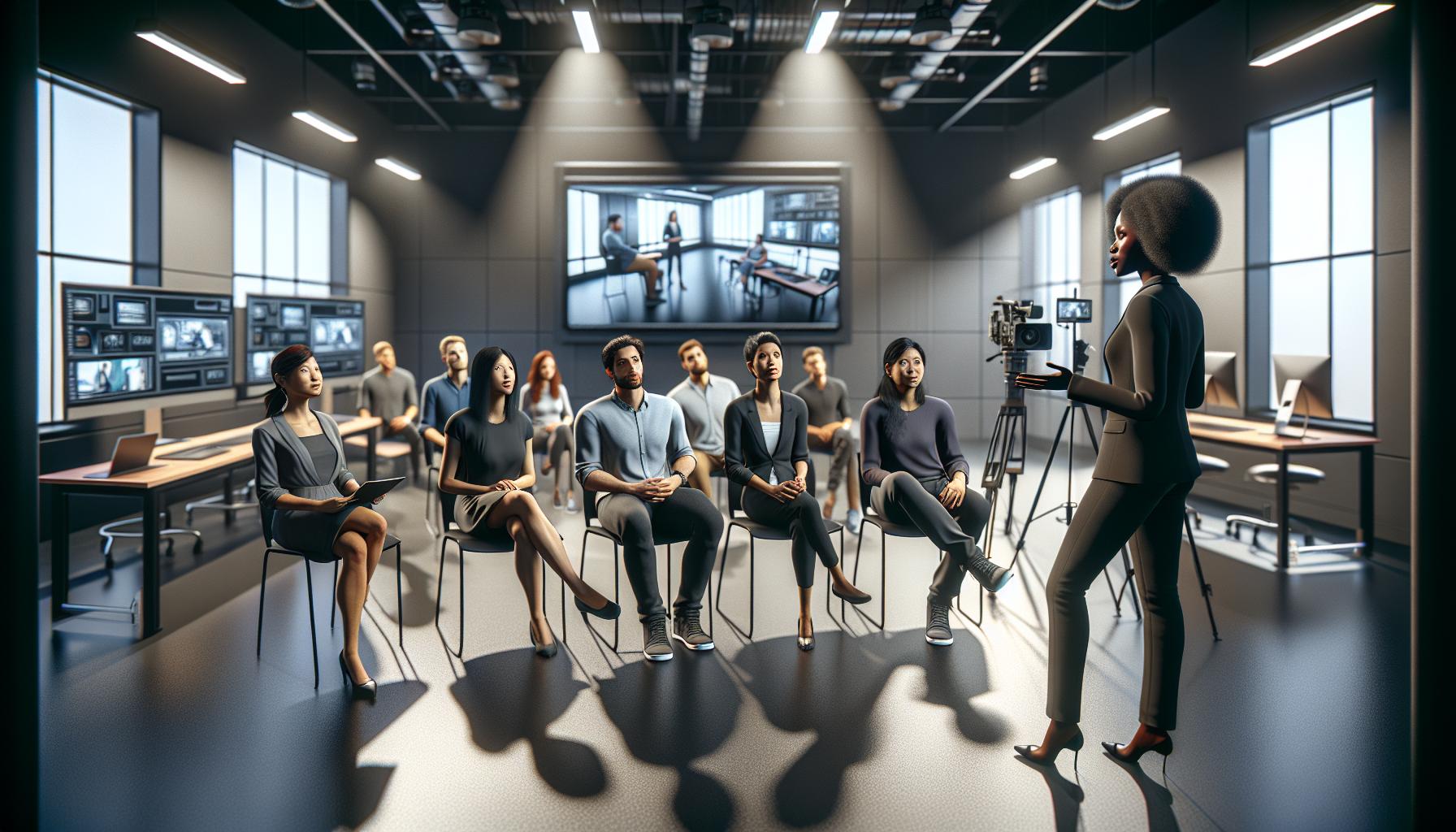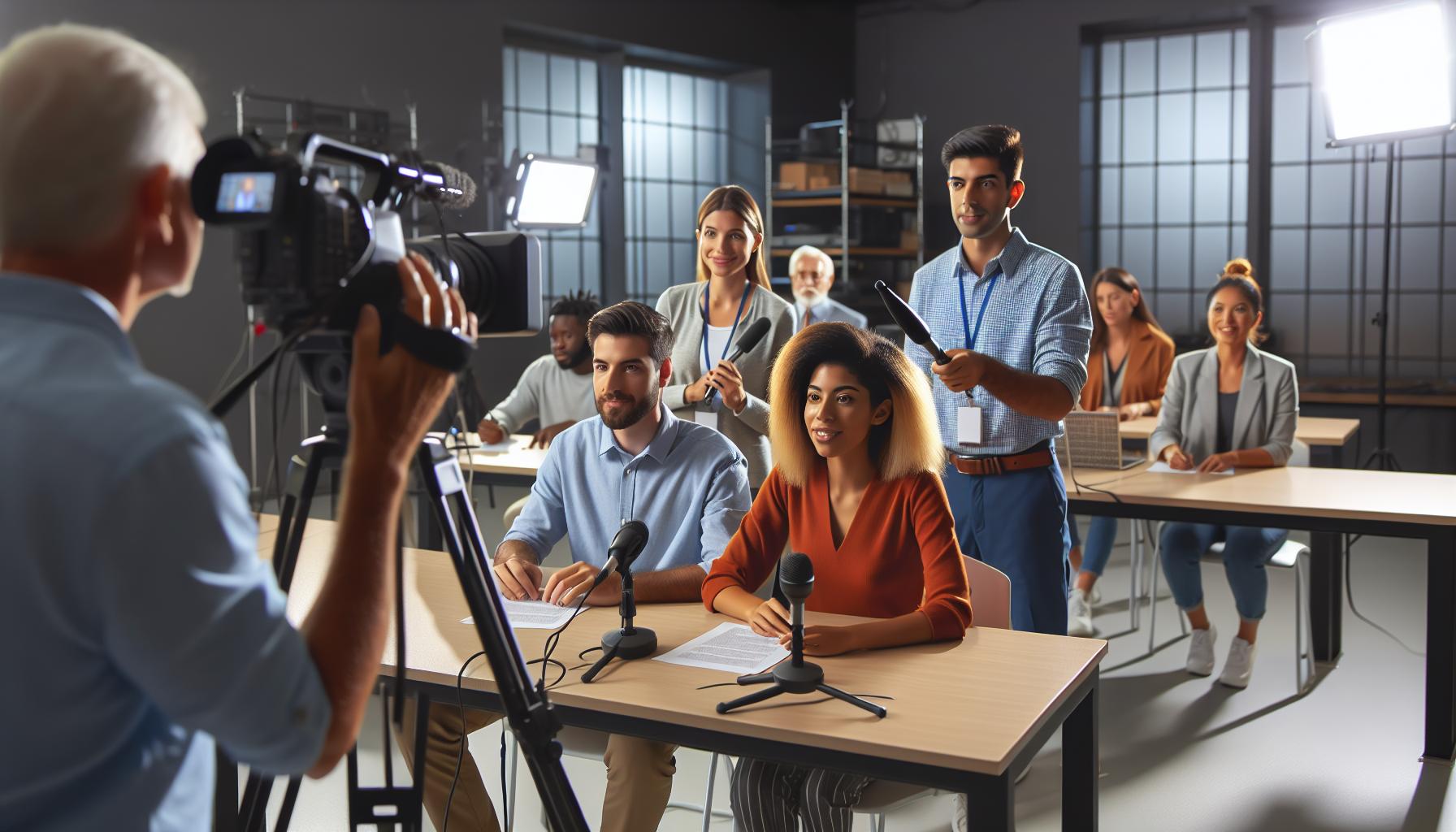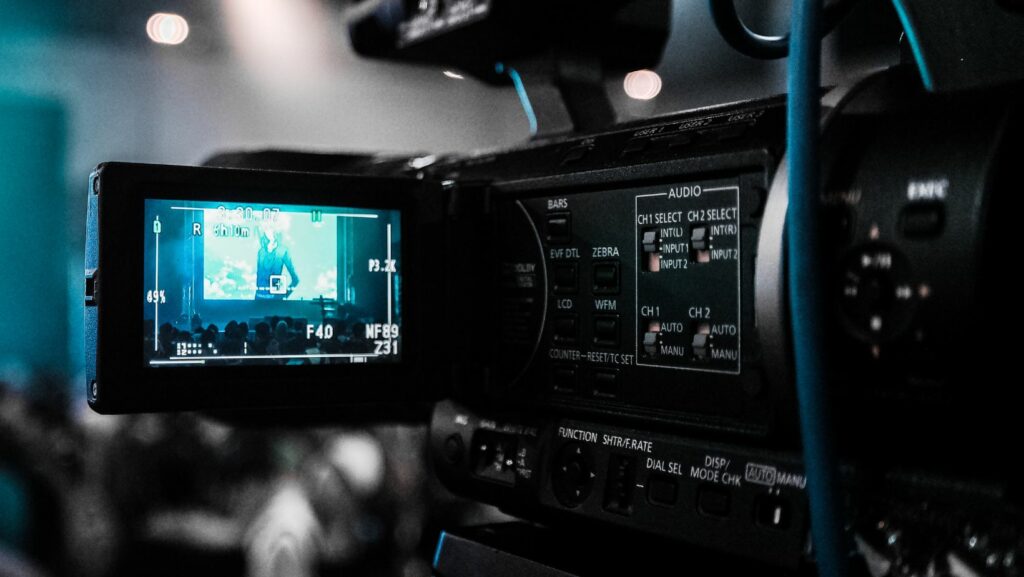Broadcast Media Training
- Master Essential Communication Skills: Broadcast media training enhances verbal and non-verbal communication, enabling clear, engaging content delivery tailored to various platforms.
- Build On-Camera Confidence: Participants gain comfort and authenticity in front of the camera, which helps establish a strong rapport with audiences.
- Understand Different Media Formats: Knowledge of the unique characteristics of television, radio, and online platforms ensures effective message adaptation for each medium.
- Focus on Message Crafting: Training emphasizes creating compelling, concise narratives that resonate with target audiences and utilize storytelling techniques.
- Embrace Feedback for Continuous Improvement: Incorporating constructive criticism enhances performance and fosters a growth mindset among participants.
- Adapt Communication to Audience Needs: Understanding audience demographics allows for tailored messaging, ensuring content is culturally sensitive and relatable.
In today’s fast-paced digital landscape, mastering the art of communication is more crucial than ever. Broadcast media training equips individuals with the skills to convey their messages effectively across various platforms, from television to social media. As audiences demand more engaging content, the ability to present ideas clearly and confidently can set one apart in a competitive environment.
Whether it’s a corporate executive preparing for a press conference or a budding journalist honing their on-camera presence, broadcast media training offers invaluable insights and practical techniques. With the right guidance, anyone can learn to navigate the complexities of media interactions, ensuring their voice resonates with viewers and listeners alike. Embracing this training can transform not just careers but also the way stories are told in the ever-evolving world of broadcast media.
Overview Of Broadcast Media Training
Broadcast media training equips individuals with essential communication skills for effective interactions in television, radio, and online media environments. The focus includes mastering verbal and non-verbal cues, improving public speaking abilities, and developing a strong presence on camera.
Training programs typically cover key areas such as:
- Message Development: Crafting clear, concise messages tailored to specific audiences enhances engagement and clarity.
- Interview Techniques: Learning strategies for responding to questions and managing challenging interviews builds confidence and composure.
- On-Camera Skills: Practicing delivery, eye contact, and body language fosters a polished appearance during broadcasts.
- Crisis Management: Developing responses to unforeseen situations strengthens resilience and adaptability in high-pressure contexts.
By participating in these training sessions, professionals improve their storytelling abilities, ensuring they connect with viewers and listeners effectively.
Importance Of Broadcast Media Training

Broadcast media training significantly boosts the ability to communicate effectively across multiple channels. It plays a crucial role in personal and professional development in today’s media-centric world.
Enhancing Communication Skills
Enhancing communication skills forms the backbone of broadcast media training. Participants learn to craft messages tailored to their audience, resulting in clearer, more engaging content. Training sessions often cover verbal and non-verbal cues, ensuring participants utilize body language and tone appropriately. Mastering interview techniques helps individuals navigate complex conversations with ease, allowing them to maintain composure during tough questioning. The emphasis on storytelling ensures messages resonate, creating memorable interactions that captivate audiences.
Building Confidence On Camera
Building confidence on camera is a vital component of broadcast media training. Training helps individuals become comfortable in front of the lens, overcoming anxiety linked to public speaking. This familiarity translates into a more natural and authentic on-screen presence. Through practice sessions, participants refine their on-camera skills, receiving constructive feedback that helps them identify areas for improvement. As confidence grows, so does the ability to connect with viewers, fostering a strong rapport which is essential in the competitive broadcast landscape.
Key Components Of Effective Training

Effective broadcast media training encompasses several components essential for success in various media formats and message crafting.
Understanding Media Formats
Understanding media formats is crucial for adapting communication strategies. Recognizing differences in television, radio, and online streaming enables individuals to tailor their delivery. Each medium has unique characteristics; for instance, television requires visual engagement while radio emphasizes vocal delivery. Familiarity with these formats ensures effective audience connection, enhancing overall presentation skills.
Crafting Compelling Messages
Crafting compelling messages involves clear and concise communication. Training focuses on creating messages that resonate with target audiences, using storytelling techniques to capture attention. Participants learn to identify key points, utilize persuasive language, and maintain consistency across multiple platforms. This skillset ensures that narratives not only inform but also engage listeners and viewers, solidifying their impact in the broadcast environment.
Best Practices In Broadcast Media Training

Implementing best practices in broadcast media training enhances learning outcomes and communication effectiveness. Focus on continuous improvement and audience awareness to maximize the impact of training sessions.
Utilizing Feedback For Improvement
Incorporating feedback significantly enhances training efficacy. Participants engage in peer evaluations and receive constructive criticism from trainers. Constructive feedback, such as identifying strengths and areas for improvement, helps refine delivery techniques and content strategies. Surveys after each session provide additional insights into training effectiveness, allowing adjustments in real time. Regular feedback cycles foster a growth mindset, enabling participants to view challenges as opportunities for improvement.
Adapting To Different Audiences
Adapting communication style for various audiences is crucial for broadcast media success. Understanding audience demographics influences tone, language, and content focus. Individuals learn to analyze audience expectations, tailoring messages to engage specific groups effectively. Training modules often include exercises that simulate different audience scenarios, allowing participants to practice adaptability skills. Emphasizing the importance of cultural sensitivity and inclusivity ensures messages resonate broadly, enhancing viewer connection and trust across diverse platforms.
Dynamic World of Broadcast Media
Broadcast media training is an invaluable resource for anyone looking to enhance their communication skills in today’s fast-paced media landscape. By mastering the art of storytelling and effective delivery, individuals can significantly elevate their personal and professional presence. The training equips participants with the tools to navigate various media formats and engage diverse audiences, fostering confidence and adaptability.
As the media environment continues to evolve, investing in broadcast media training ensures that professionals remain competitive and relevant. Embracing these learning opportunities not only transforms individual careers but also enriches the broader narrative within the dynamic world of broadcast media.

